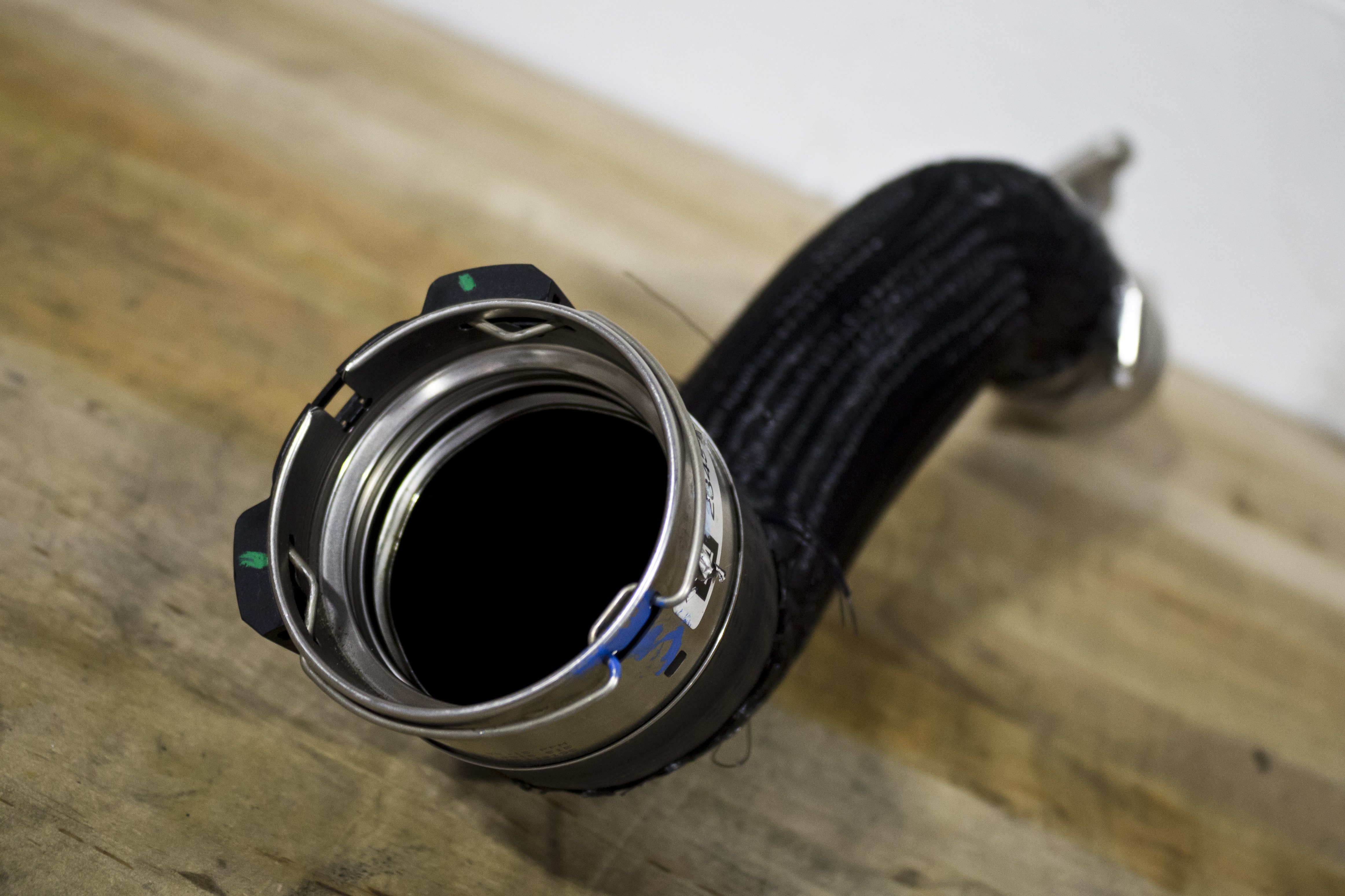
Hot and Cold - Intercooler Pipes R&D, Part 1: Stock Review
When I was young, I had a serious tendency to become fixated on a specific item or experience. Starry-eyed and captivated, I'd stubbornly obsess over my desire-du-jour at the expense of appreciating what was going on in the moment - something that was lost on me at the time, but hardly seems unique now, among my generational peers (or even those decades my senior). It's a fault upon which I've improved vastly with age and "wisdom", but I regularly notice reflections of the same tendency beyond the scope of my own experience, even regarding one's attitude to something as simple as Chevy parts.
You see, although this phenomenon tends often to be associated with my generation, I would argue that its application extends much more broadly to human nature.
If I had a nickel for every time I heard my aunts, uncles, and parents rehashing their college days, often followed by "I wish I had taken advantage of X opportunity or done Y thing - I was just too focused on Z!", I'd have enough money to finally buy that damn Power Wheels I've wanted since I was ten!

Hyperbole aside, my point is this: We often tend to hold the major things so highly that we lose track of the journey it takes to achieve or obtain them.
If I told you we are working on improving something in the charge air system in your 2016 Camaro 2.0T, what comes to mind?
You might be thinking: "Why, the intercooler, of course!" While you may consider the intercooler the main event, we don't want to lose track of the journey. (Though we ARE working on a Camaro intercooler.) How does charge air travel into - and subsequently out of - the intercooler?
Intercooler pipes, baby! 2.0T Camaro intercooler pipes, to be exact.
Let's Talk Pipes
Intercooler pipes are generally made up of two separate sections: a hot-side pipe and a cold-side pipe. Sometimes, people use the same nomenclature in referring to the two sections of a turbo. This is done for the express purpose of confusing non-car enthusiasts and making ourselves sound smarter when geeking out over engines.
When talking about a turbo, the hot side is the turbine side, and the cold side is the compressor side. In talking about intercooler pipes, although we use the same terms, their applications are much more straightforward. Let's take a look at how that applies to Camaro parts.
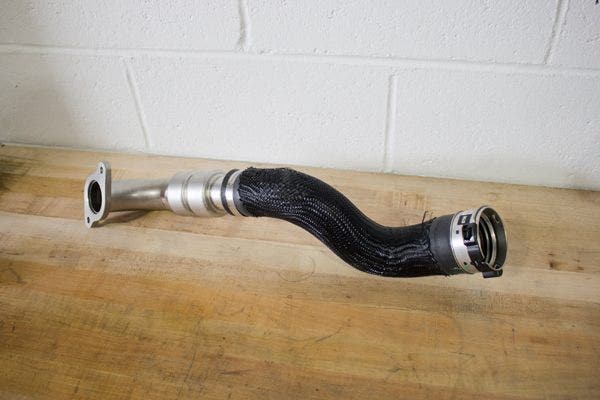
The stock 2016 2.0T Camaro intercooler pipe (hot side)
The hot side carries hot charge air from the turbo to the intercooler, and the cold side takes the now much cooler air from the intercooler and guides it to the manifold.
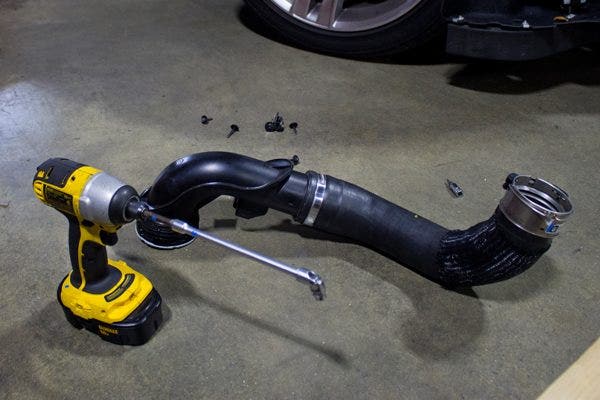
The cold side 2016 Camaro intercooler pipe
In the photos above, you can see that the stock pipes are made of plastic and incorporate bends, flex-sections, and resonators in their design. In the same way these elements can impede airflow in an exhaust system or an intake, they can also take a toll on flow and pressure changes in intercooler pipes.
These pipes also feature GM's quick-disconnect fittings, which make removal or installation a quick and painless process. We will be incorporating this into our design to retain compatibility with stock Camaro parts.
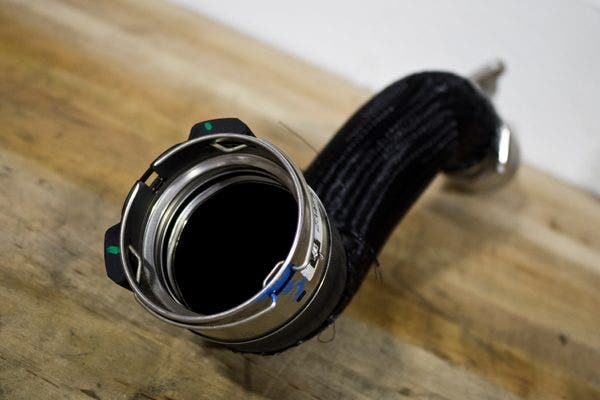
Close-up of the female side of the quick-disconnect fittings found on Camaro parts
To measure the flow of our stock Camaro intercooler pipes, we tested them on our flow-bench.
Flow-Bench Testing our Chevy Parts
Our flow-bench is a valuable tool for measuring the mass flow rate of a gas through our cores, pipes, and intakes. The device works by using a pump to pull air through the tested piece. It measures and compares the temperature and pressure changes across the tested piece to those in the flow-bench's internal metering system.
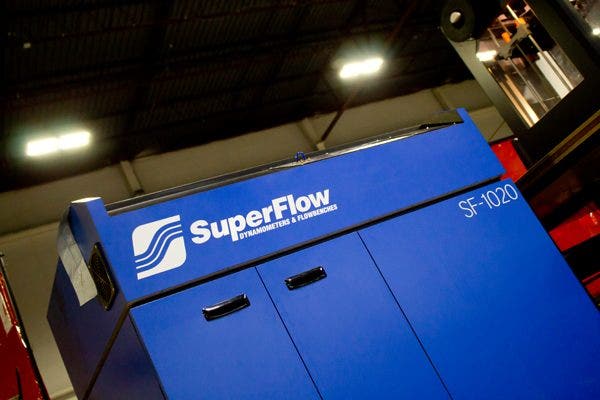
One of our valuable engineering tools - the flow-bench helps us tremendously in designing Chevy parts
This process defines variables that are used in an equation to calculate the mass flow rate of a gas through the tested piece, giving us a good idea of how restrictive the stock piece is. This facilitates a comparison to our prototypes, helping us quantify and specify the degree of performance improvements we make, and giving us insight into how we can make them even better.
Preparing the Flow-Bench
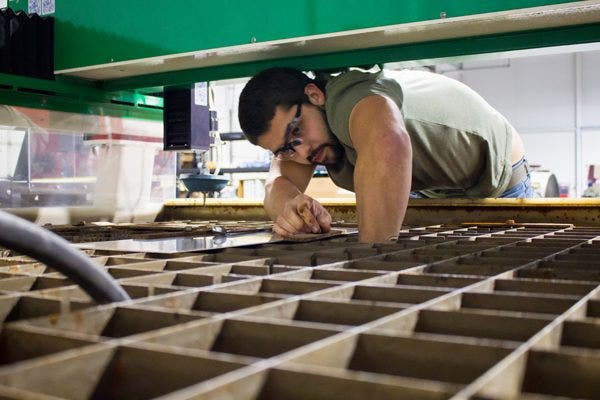
Steve, right before he finally found his watch!
In setting up our flow-bench test, the first thing on the agenda was to build an adapter for whatever piece needs testing. Each adapter begins life as a piece of sheet metal.
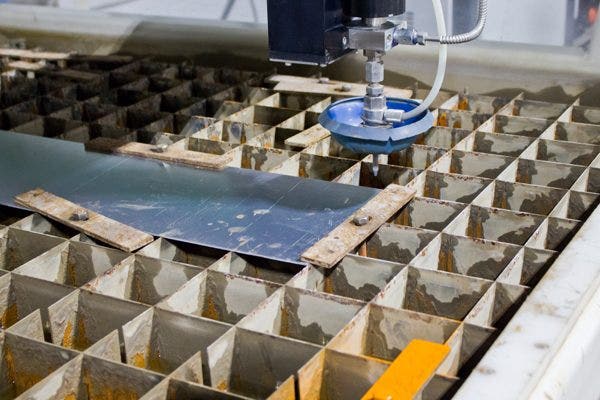
First, the sheet metal is placed on the cutting surface while the jet is calibrated and aligned
After we let the water jet loose on the sheet metal, we found ourselves with a nice mounting plate featuring openings of the appropriate diameters for mounting our testing part and for bolting the plate to the flow-bench. Pretty impressive. This thing cuts through anything!
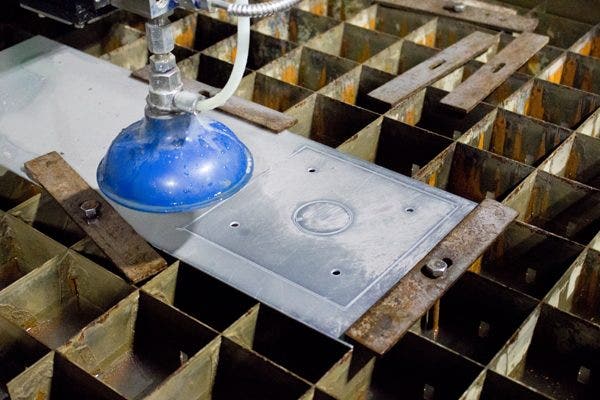
Look at those cuts! Much easier than by hand.
Next, Steve glued on a 3D-printed replica of the intercooler pipes' on-vehicle mounting points. In this case, we needed to recreate the male counterpart to the female side of the quick-disconnect fittings found on the Camaro intercooler pipes.
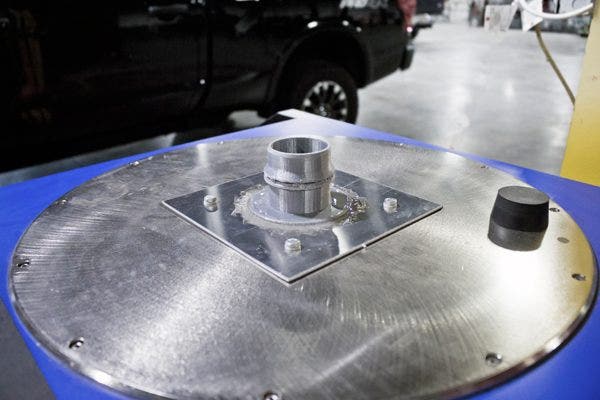
The result of all that water jetting and 3D printing! Now, we can test some Chevy parts.
Finally, our testing rig was ready for use. Steve threw the stock cold-side pipe on, fired up the flow-bench, and got to testing.
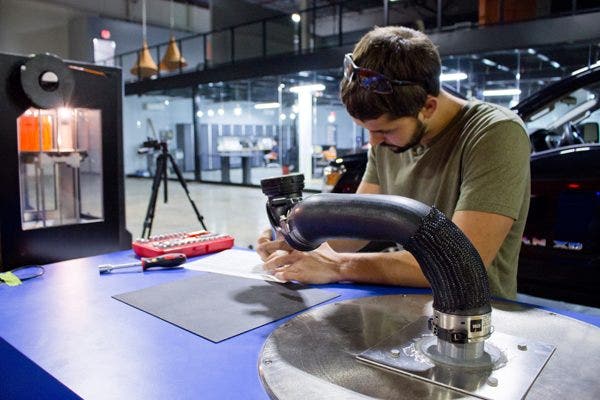
Steve, analyzing the data output from the cold side pipe on the flow bench.
Coming Soon
Steve has already begun to collect valuable insight on the limitations of the stock Camaro intercooler pipes. He's been working on a design with numerous improvements. Next time, we'll take a look at some renderings of his design, and later, we'll bring that design to life, throw it on the flow-bench, and come up with some numbers to compare our Chevy parts to stock.
Thanks for reading,
-Gardiner




